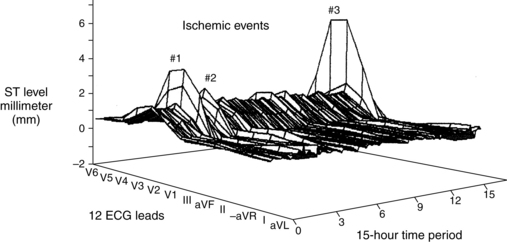

- CARDIAC MONITOR THAT CONTIUSLY MONITY ST ELEVATION DRIVERS
- CARDIAC MONITOR THAT CONTIUSLY MONITY ST ELEVATION CODE
One hundred sixty-five procedures on 123 unique patients were eliminated since the patients did not authorize for research participation. We prospectively studied consecutive patients who underwent PCI from October, 01, 2015 to August, 25, 2017, at our center.

The time from end of the procedure to AA was also recorded.Īt Mayo Clinic, all uncomplicated elective PCIs, ACSs (unstable angina, non–ST-segment–elevation myocardial infarction, ST-segment–elevation myocardial infarction with Zwolle score 4 in cases of STEMI.
CARDIAC MONITOR THAT CONTIUSLY MONITY ST ELEVATION CODE
Code team activation was automatically triggered in sustained VT and ventricular fibrillation. AA related to tachycardia included (1) ventricular fibrillation (VF), (2) >15 consecutive beats of ventricular tachycardia, (3) atrial fibrillation with rapid ventricular response (>100 bpm), (4) >15 consecutive beats of supraventricular tachycardia. Monitor alarms were further classified into AA related to bradycardia, including (1) ≥3 s electrical pause or asystole, and (2) high-grade Mobitz type II atrioventricular block or complete heart block. High-risk patients in the cardiac ICUs who required continuous cardiac monitoring were excluded from the study.ĭefinitions of monitor alarms were bradycardia (heart rate 100 bpm), or ≥3 beats of ventricular tachycardia (VT). Only patients in the progressive care units (ie, non-ICU) were included in the study. Data on initial rhythm on cardiac telemetry (eg, sinus rhythm or atrial fibrillation) and length of cardiac telemetry surveillance in hours are recorded. Feind) and entered prospectively into an electronic database. The alarms are further validated by senior technologists (R.J.

The telemetry alarms are reviewed and collected by experienced technologists at the time of occurrence. Potential cost savings by following recommended American Heart Association (AHA) monitoring guidelines 8 for stable angina and ACS after PCI (opposed to monitoring all patients until discharge) was investigated in this study population.Īll patients at Mayo Clinic undergo routine cardiac telemetry monitoring immediately post-PCI that typically continues until discharge. The aims of the present study are to report the incidence of significant arrhythmias following PCI in patients not admitted to intensive care units (ICU) to study whether telemetry alarms for clinically relevant arrhythmia influences management and to identify predictors of actionable alarms (AA). There is paucity of contemporary prospective data with regards to the prevalence and prognostic implications of routine cardiac monitoring following PCI. Telemetry monitoring at our institution continues until discharge in elective cases as most are same-day dismissal and for at least 24 hours (typically until discharge) in patients with acute coronary syndrome (ACS). In addition, potentially fatal arrhythmic complications dissuade early discharge planning and keep the patient with continuous electrocardiographic monitoring. The use of radial access, small sheath size, and modification of the antiplatelet and anticoagulation protocols have reduced access-related vascular and bleeding complications 5–7 however, the prevalence and impact of arrhythmias on the safety of such protocols is unknown.
CARDIAC MONITOR THAT CONTIUSLY MONITY ST ELEVATION DRIVERS
3, 4 Three main drivers for prolonged length of stay include postprocedure bleeding, acute stent thrombosis, or potentially fatal arrhythmic/conduction system disorder events. 1, 2 Currently, the PCI success rates exceed 90% overall, and 98% to 99% in elective cases, underscoring the need to review the current postprocedural protocols.



 0 kommentar(er)
0 kommentar(er)
